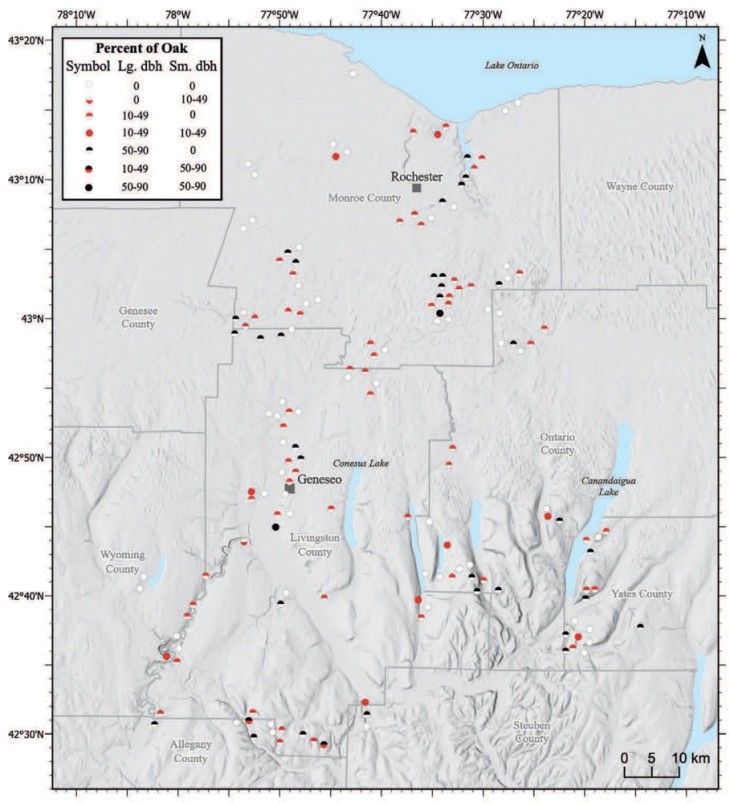
In 1900, much of the forest in the eastern United States was filled with oaks and other trees that tolerated fire. This structure in part reflected previous centuries of shaping by Indigenous peoples, who burned undergrowth and encouraged trees that produced acorns and nuts, and by settlers, who also set the woods on fire, both deliberately and accidentally.
Today, however, oaks are in decline in many hardwood forests. There are still large specimens in the canopy, but there’s little regeneration. The understory is now filled with beech, red maple, sugar maple, and ironwood.
Scientists use the term mesophication to describe these trends, which have been detected in hundreds of studies across the region. Although mesophication is often associated with oak woodlands, forests of all types are experiencing the shift away from fire-tolerant trees, according to a study of 2,488 trees across 160 sample plots in western New York.
Researchers at University at Buffalo and SUNY Geneseo, funded by the National Science Foundation, have modeled numerous factors that may be influencing this trend. One is fire history. Forests that burned more often in the past, such as those closest to historical “Native American towns,” had the greatest decrease in fire-tolerant trees. Another is age. Older forests have had more time to grow dense and cool, favoring mesophytic species, said lead author Chris Larsen, professor at University at Buffalo.
Wetter weather, air pollution, and deer browsing pressure also have contributed to the trend. Most sites had unique combinations of factors, such as soil chemistry or moisture, along with different patterns of how individual trees respond to fire, causing the authors to conclude it might be best to consider forest mesophication “a complex syndrome rather than a singular process.” This complexity also might explain why prescribed burns have had limited success in restoring oaks.
“Knowledge of which traits are most changed and what predictors best explain those changes would allow land managers to better determine what management approaches might most appropriately shift the forest composition in the desired direction,” the researchers concluded in Forest Ecology & Management in November 2023. The site-specific nature of mesophication means that forest managers need to consider local history and conditions.

